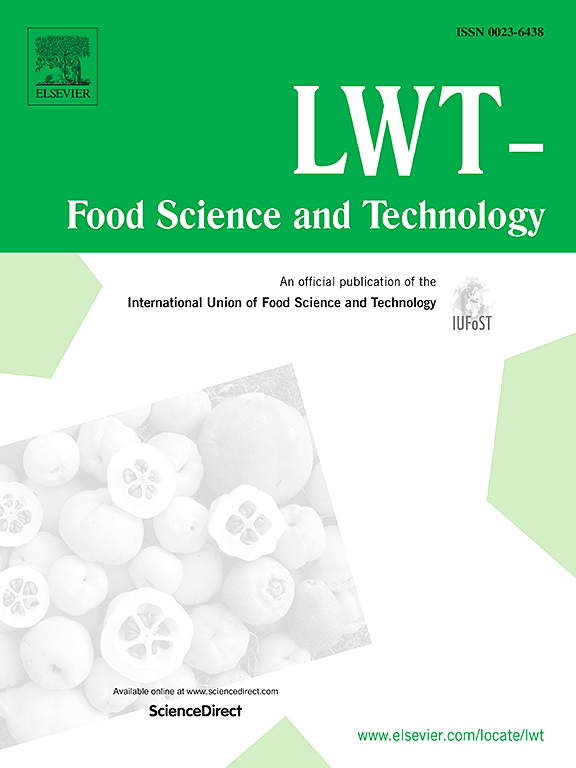Effects of gradient milling on textural perception, swallowing threshold, and starch hydrolysis of cooked black rice: Implications for human mastication
IF 6.6
1区 农林科学
Q1 FOOD SCIENCE & TECHNOLOGY
引用次数: 0
Abstract
This study endeavored to examine the impact of gradient milling on the oral processing of black rice through an oral chewing and texture perception test conducted on healthy adult volunteers. Utilizing standard white rice samples as a reference, subjective texture perception tests employing a visual analogue scale (VAS) showed that participants subjectively perceived a notable reduction in perceived hardness, chewing difficulty, and swallowing difficulty of black rice as the milling degree increased. Compared to refined black rice, whole grain and lightly milled black rice substantially prolonged chewing time at the first swallowing, chewing time at the swallowing threshold, and significantly increased glucose content released during oral processing. Correlation analysis unveiled significant positive associations between the chewing time at the swallowing threshold and the chewing time at the first swallowing (R2 = 0.7661, p < 0.001), as well as the subjective hardness perception of the subjects and the chewing time at the swallowing threshold (R2 = 0.0600, p < 0.001). Furthermore, the chewing time at the first swallowing displayed a significant positive correlation with the amount of released glucose in the oral digestion (R2 = 0.1255, p < 0.001), while the amount of saliva impregnation exhibited a significant positive correlation with the glucose amount released in the oral digestion (R2 = 0.3666, p < 0.001).

梯度碾磨对煮熟黑米的质感感知、吞咽阈值和淀粉水解的影响:对人类咀嚼的影响
本研究通过对健康成人志愿者进行口腔咀嚼和口感感知实验,探讨梯度碾磨对黑米口腔加工的影响。以标准白米样品为参照,采用视觉模拟量表(visual analogue scale, VAS)进行主观纹理感知测试,结果显示,随着碾磨程度的增加,被试主观感知的黑米硬度、咀嚼难度和吞咽难度显著降低。与精制黑米相比,粗粮黑米和精米黑米明显延长了首次吞咽时的咀嚼时间和吞咽阈值时的咀嚼时间,并显著增加了口腔加工过程中释放的葡萄糖含量。相关分析显示,吞咽阈点咀嚼时间与首次吞咽咀嚼时间呈显著正相关(R2 = 0.7661, p <;受试者主观硬度感知和吞咽阈值咀嚼时间(R2 = 0.0600, p <;0.001)。此外,首次吞咽时的咀嚼时间与口腔消化中葡萄糖的释放量呈显著正相关(R2 = 0.1255, p <;0.001),而唾液浸渍量与口腔消化释放的葡萄糖量呈显著正相关(R2 = 0.3666, p <;0.001)。
本文章由计算机程序翻译,如有差异,请以英文原文为准。
求助全文
约1分钟内获得全文
求助全文
来源期刊

LWT - Food Science and Technology
工程技术-食品科技
CiteScore
11.80
自引率
6.70%
发文量
1724
审稿时长
65 days
期刊介绍:
LWT - Food Science and Technology is an international journal that publishes innovative papers in the fields of food chemistry, biochemistry, microbiology, technology and nutrition. The work described should be innovative either in the approach or in the methods used. The significance of the results either for the science community or for the food industry must also be specified. Contributions written in English are welcomed in the form of review articles, short reviews, research papers, and research notes. Papers featuring animal trials and cell cultures are outside the scope of the journal and will not be considered for publication.
 求助内容:
求助内容: 应助结果提醒方式:
应助结果提醒方式:


